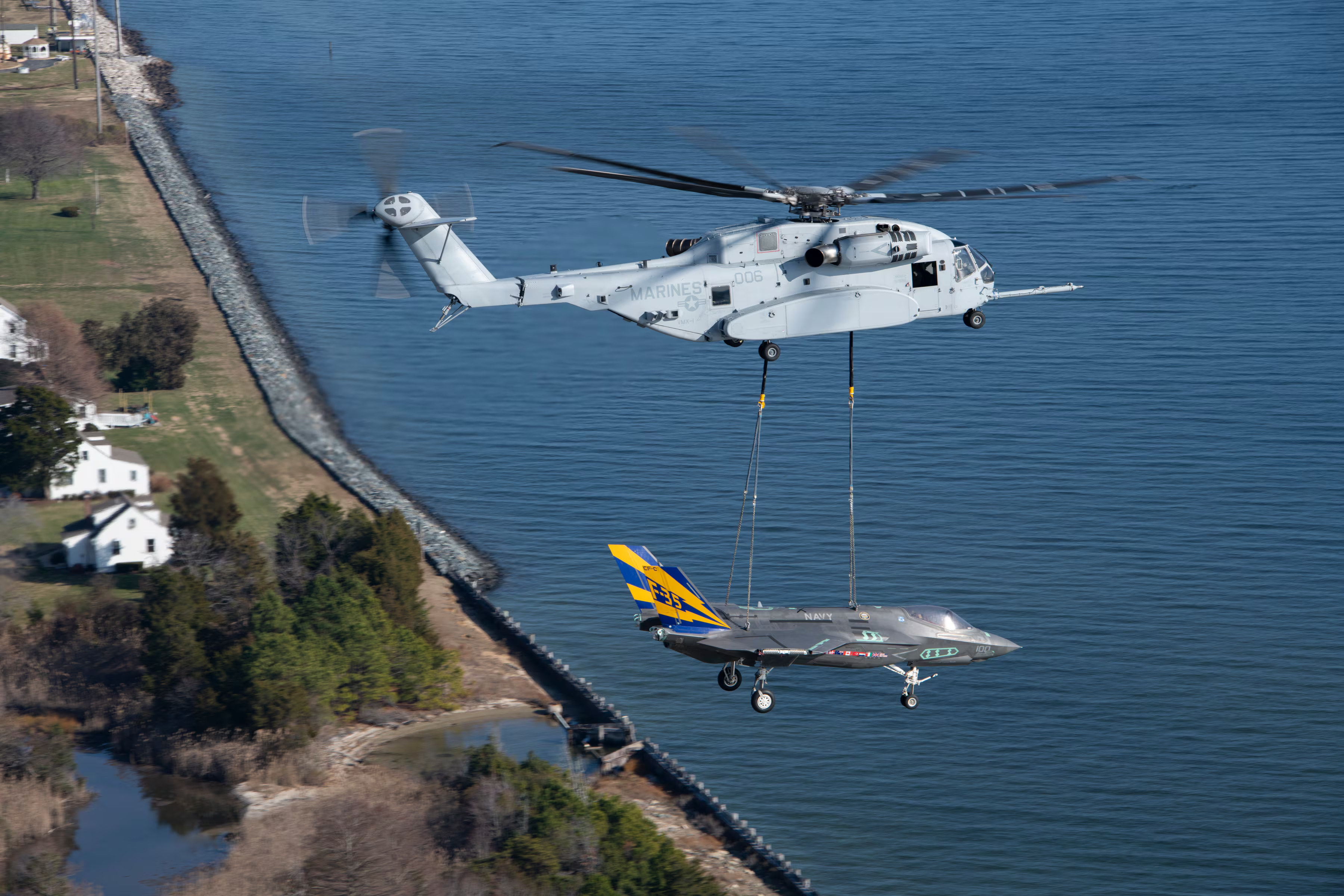NATIONAL HARBOR, Md. — The Marine Corps’ CH-53K heavy lift helicopter program is preparing for a first deployment in 2025 as builder Sikorsky looks for additional customers to fill out its growing production line.
Marine Heavy Helicopter Squadron 461, which became the service’s first deployable CH-53K King Stallion squadron in January 2022, has been deploying small detachments for exercises as it builds up its proficiency, said Col. Kate Fleeger, the H-53 helicopters program manager at Naval Air Systems Command. She addressed the media during an April 3 program briefing at the Navy League’s annual Sea Air Space conference here.
In late March, in fact, a detachment flew lift missions at the Marine Corps Weapons and Tactics Instructor Course in Yuma, Arizona, as part of the Marine Air-Ground Task Force training that takes place there.
Fleeger said this gave the pilots, aircrew and maintainers a chance to train from a forward-deployed location of sorts, away from their home station at Marine Corps Air Station New River, North Carolina, and helped continue efforts to integrate the new CH-53K into the whole air and ground force.
Ahead of a planned 2025 first deployment on an East Coast amphibious ready group — more details about which ship and when have not been decided, she said — the squadron will continue activities like this to become more proficient in operating and sustaining the platform and demonstrating it to other naval aviation communities and ground forces.
The CH-53K program was previously aiming for a fiscal 2024 first deployment. Spokeswoman Megan Wasel told Defense News the Marine Corps directed the program office to shift to a 2025 deployment timeline.
Fleeger said the program office is also ramping up the supply system ahead of both the deployment and a 2024 material support date, when the responsibilities of caring for the helicopters transfer from the program office to the broader naval supply system.
After reaching initial operational capability in April 2022, the program should hit full operational capability in 2029, the colonel added.

On the manufacturing side, builder Sikorsky has “dramatically changed our production line in Connecticut as we ramp towards full-rate production,” according to Bill Falk, the company’s 53K program manager.
To date, nine total aircraft have delivered, with seven more in various stages of completion.
Last year, Sikorsky delivered four aircraft, Falk said; that will ramp up to 24 a year as the company gets into full production for the Marines.
The Navy declared full-rate production in December. Sikorsky is still working on aircraft bought under previous low-rate initial production lots — it has 48 on contract, including four for Israel — but Lot 7 in this current fiscal year and Lot 8 in FY24 will be the first full-rate production contracts.
Falk said the company is buying long-lead materials for 33 aircraft in these upcoming full-rate production contracts, including eight aircraft for Israel.
In addition, the production plant in Connecticut added a second line. The facility now includes two parallel lines with four stations each, before the hulls get moved to a hangar for installation of the propellors and other items, he said.
This new configuration will allow for a delivery rate of two a month. That could be increased to three a month if additional foreign customers buy into the program.
“We hope and believe there are additional international customers that could utilize the capability of the 53K,” Falk said, adding the company is pitching the helo not only for the heavy lift role but also as a multi-role helicopter.
A Sikorsky slide listed Germany, South Korea, Switzerland, India, Japan, Indonesia, the United Arab Emirates, Saudi Arabia, Qatar, Egypt, France, Italy, the Netherlands and the United Kingdom as “developing opportunities.”
Israel is already committed to buying 12, with an option for six more. The U.S. Marines have a program of record for 200 aircraft.
Megan Eckstein is the naval warfare reporter at Defense News. She has covered military news since 2009, with a focus on U.S. Navy and Marine Corps operations, acquisition programs and budgets. She has reported from four geographic fleets and is happiest when she’s filing stories from a ship. Megan is a University of Maryland alumna.







